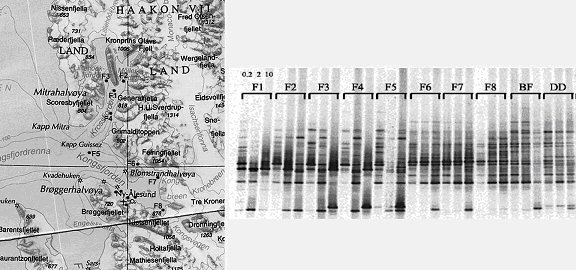Consequences of climate change for Arctic coastal pelagic microbial communities

Summary
The objective of this IPY project was to increase our understanding of the conditions that structure coastal Arctic microbial and phytoplankton production, abundance and diversity and how this is influenced by melt water of retreating glaciers. During the first summer campaign of 2007 in the Kongsfjorden - Krossfjorden system, Spitsbergen (78° 55’N, 11° 56’E),eukaryote and prokaryote diversity was studied using a range of molecular techniques. In addition, effects of irradiance quantity and quality on phyto- and bacterioplankton composition was studied in minicosm experiments on shore. A second field campaign was performed in April-May 2008, covering the initiation of the Arctic spring bloom. Water samples were collected for microbial/phytoplankton species abundance, composition and diversity, together with profiling of physical/chemical water column properties (salinity, temperature, spectral light attenuation). The relative algal class abundance was determined by HPLC pigment fingerprints. Species composition was determined by classical microscopy and by sequencing, while community shifts and diversity was assessed by DNA fingerprinting using DGGE. Additionally, bacterial and phytoplankton production were measured using isotope incorporation assays, and group specific activity of major bacterial groups was determined by Micro-CARD-FISH. This method combines fluorescent group specific probe labelling and the uptake of radioactively labelled amino-acids. We also conducted land-based minicosm experiments, studying the effects of turbidity, salinity and nutrients on species composition, diversity, abundance and productivity of the eukaryotic and bacterial microbial community.
Although DGGE and pigment analyses are not completely finalized, the available data suggest particularly high species richness in front of both glaciers (Kongsbreen, Lillehöökbreen) compared to the other stations. The phytoplankton spring-bloom, dominated by Phaeocystis sp. and diatom species, was followed by the nutrient depleted post-bloom situation characterized by low biomass, dinoflagellate dominance and a strong increase in species richness. Bacterial production increased throughout the bloom period. Micro-CARD-FISH analysis revealed a strong increase in Bacteroidetes and Roseobacter abundance and activity in both fjords in response to increased primary productivity. Overall, glacier meltwater input caused decrease in phytoplankton biomass as well as decrease in average phytoplankton cell size, favouring small celled groups (cyanobacteria, cryptophytes, green algae) over large diatoms.
(IPY project, with major partner AWI, Bremerhaven, DE)

| Last modified: | 18 January 2022 3.32 p.m. |
